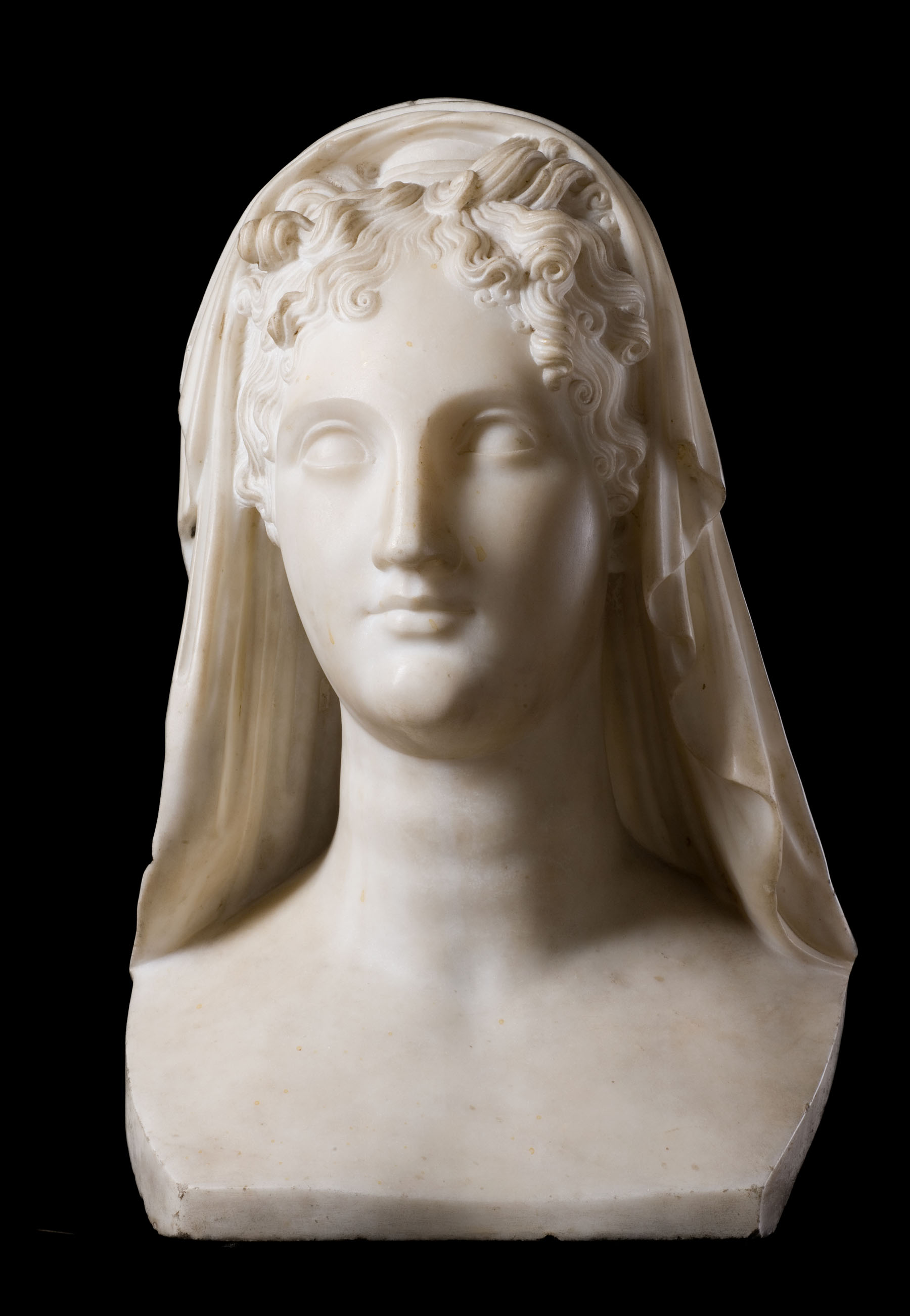
Beatrice
Antonio Canova (1757-1822)
19th century, White marble
In 1813, Antonio Canova, the celebrated sculptor and leading figure of the neoclassical age – considered, in his lifetime, to be a new Phidias – sculpted two terracotta portraits of Juliette Récamier, the splendid and very wealthy Parisian lady who opened her cultural salon to him as well. The works did not please her, and the artist, deeply resentful, took back one of the two models four years later, transforming it into a Beatrice, in homage to Dante, since the 500th anniversary of the Tuscan poet’s death was being celebrated in 1821. The work in question makes use of the face of Beatrice as it is known in another version of the subject, which, like this one, is characterised by the daring shape of the veil sloping down in soft folds with strong formal impact: for sculptures such as these, Canova imagined that they would be seen by candlelight, alone, placed in such a way that the flickering flame would caress the beautiful face of the effigy, making it all the more suggestive. Considering works such as this one, it is easy to understand the influence that the refined art of the great sculptor from Possagno exerted on all of Europe.

